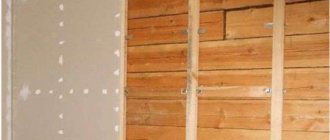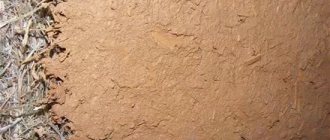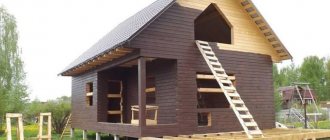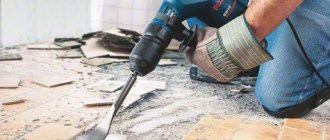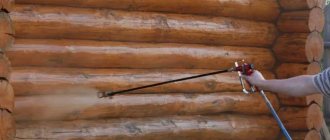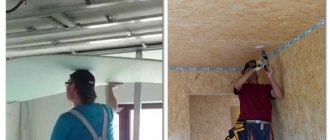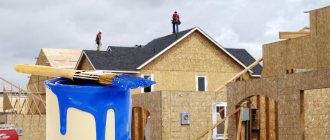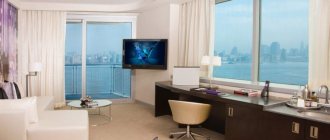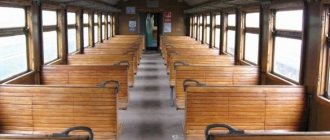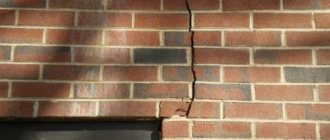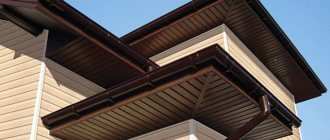The modern market offers a wide selection of different building materials, but wood is still one of the most in demand. It is difficult to imagine a village in which there would not be a house made of timber. Every owner, having built or purchased a similar property, once asks the question: how to paint the inside of a wooden house?
This is necessary to create the foundation of the building's interior and prevent pests from entering. How to paint a wooden house? Next, we will consider the options for various coatings with which you can paint your house.
Materials for dyeing
When deciding what to paint the walls, ceilings and floors of a wooden house, pay attention to the range of products from the GNature company. Paint for walls and ceilings is represented here by three main products:
- solid oil GNature 245;
- glaze with beeswax GNature 470;
- wax glaze GNature 450.
Bedroom in the attic
The attic is a fairly common place to create a bedroom. Therefore, you need to carefully approach the preliminary preparation of the room. It is necessary to insulate it, think over the lighting, and only after that take care of the beauty of the design.
The location of the bedroom should be determined at the stage of designing the house.
A house with two floors allows you to most rationally organize the location of “quiet” and “noisy” rooms relative to each other.
The right approach to design can visually “dissolve” the roof and create a cozy, warm room. To achieve this effect, use:
- Textile drapery;
- Walls painted with light paint;
- Minimum amount of furniture;
- Cross beams that will hide sharp corners (can be painted in a contrasting color).
The premises on the second floor are always warmer, and the arrangement of the rooms on two levels will provide the necessary isolation and intimacy.
See also Stylistic infusion of a dressing table with a mirror into the bedroom with photo examples
Compound
The listed materials contain only natural raw materials and natural components, which makes them environmentally friendly and hypoallergenic. Product composition:
- natural oils (linseed, tung, safflower, etc.);
- natural waxes (beeswax, carnauba wax - from palm leaves);
- natural resins (rosin - pine resin);
- water.
Lining painting techniques
- Brushing. Painting option for soft wood. First, remove their top layer with a coarse brush, then the surface is sanded and covered with stain.
- Patination. Two colors similar in tone are used. First, a thick layer of the first shade is applied to the wood and dried. Then a second lighter one is applied and also dried. The surface is sanded.
- Paraffin coating. Gives the surface abrasion. Paraffin is applied unevenly, then the lining is patinated. After drying, the paraffin is removed with a spatula. The surface is opened with stain.
- Bleaching. The base is covered with acrylic pigment or stain, and a layer of oil is applied on top. For a beautiful design, excess dye is removed and the surface is rubbed. The technique is used for painting white while maintaining the texture of the lining. When applying stain, do not pour too much mixture.
To get the desired shade, it is better to paint in several very thin layers, each of which is given time to dry completely.
- Furniture painting. First, the stain is applied, then the surface is primed twice. When the soil dries, the lining is sanded several times. To obtain a matte finish, the lamellas are first sanded with 280 and then 320 grit sandpaper. After removing the sanding dust, the wood is varnished.
Application area
All three of these products create a matte surface when painted. But due to the composition of the included components, they have different areas of application. So:
- Solid oil 245, which contains a mixture of natural resins, oils and waxes, is used to coat all types of wooden surfaces: ceilings, walls, window sills, furniture, interior elements, toys and even floors in any room.
- Glaze with beeswax 470, which contains natural oils, resins, beeswax and water as a diluent, is suitable only for walls, ceilings and wooden decorative elements.
- Wax glaze 450, consisting of a mixture of waxes and water, without the addition of oils, is suitable for painting walls and ceilings in dry rooms that do not require frequent washing and do not have contact with moisture.
Bedroom decor
Don't overload the space and fill the room with cute trinkets.
The choice of decorative elements depends on the chosen style in the room.
Items that have practical value are also suitable for decoration:
- Lamps of unusual shape;
- Watch;
- Cover;
- Curtains;
- Carpet;
- Soft pillows;
- Candlesticks;
- Natural flowers.
Textile accessories are most harmoniously combined with natural wood - the fabric should be natural.
Handmade items are welcome.
Design work is an exciting activity. And the result will please you for a long time. With some effort, you can create a cozy and beautiful room that will promote good rest and sound sleep.
In a windowless room, it is necessary to equip a high-quality ventilation system to ensure an optimal microclimate.
See alsoAdvantages of using photo wallpaper in the bedroom above the bed with photos
Surface preparation
Before applying paint, the entire wooden surface should be thoroughly sanded. It is better to do this indoors with a grinder with dust removal using P150 abrasives. Sanding the surface will help:
- get rid of minor scratches, chips and defects;
- open the pores of the wood for better paint absorption;
- emphasize the structure of wood during subsequent painting;
- get a more even, beautiful color shade.
The quality of sanding determines the paint consumption and color saturation. The rougher the grinding, the higher the product consumption and the more saturated the color the surface acquires.
Preparatory stages
Proper preparation of the lining for painting makes it easier to work with the material in the future. New dried boards should be cleaned of dirt. If it is very dusty, you can use a damp cloth and baking soda. Then it is necessary to eliminate all defects.
The wood is sanded with pumice or fine sandpaper. Small particles are removed and primer is applied.
If the lining has already been used, preparatory work includes mandatory cleaning of the old coating. Paint and old varnish are removed with solvents. Multilayer dried materials are removed with a metal brush, hairdryer, or construction spatula.
If in the future the old lining will be covered with transparent varnish, then it is better to use a mechanical cleaning method. Solvents and removers can whiten the surface unevenly.
Selecting Tools
To apply the listed materials, it is better to use paint brushes with dense synthetic bristles. The exception is universal solid oil 245 - you can use a brush with natural bristles to apply it. It is not recommended to use sprayers due to the thicker application of paint, which not only results in excessive consumption of materials, but also takes a long time to dry.
The choice of brush is also important: a high-quality brush with dense bristles will allow you to apply the paint faster and more evenly without leaving marks. Cheap brushes with loose padding tend to leave marks on the surface and do not allow you to achieve an even, thin layer.
Why paint the inside of a wooden building?
Before painting the inside of a timber house, you should understand for what purpose such finishing should be carried out. Any type of wood, even expensive ones, loses its properties over time if additional surface protection is not applied. Indoors, a tree can be exposed to a number of factors that have a detrimental effect on it:
- Change of temperature indicators;
- Changes in humidity levels;
- Mechanical loads.
The fact that wood is a natural material is usually the reason for choosing it. Natural smells and external characteristics delight the owners. However, without a protective layer of various means, the structure will last no more than five years. As a result, the following changes will occur to the structure of the material:
- Darkening of color;
- Surface cracking;
- Various insects will begin to destroy it;
- Biological formations.
Painting the inside of your home should serve not only to improve the appearance, but also to create a barrier against external manifestations.
Without a protective layer of various products, the structure will last no more than five years.
Dyeing technology
Painting wooden surfaces always occurs in two stages: the paint is applied in two layers. After applying the first layer, you must wait for it to dry completely, being sure to wait for the time specified by the manufacturer on the label. To obtain a perfectly smooth surface after the first coat of paint has dried, the wood can be sanded with P600 abrasive manually, lightly touching (only with the weight of your hand) and moving in one direction. After treatment, wipe the surface with a soft, dry cloth and begin applying the second coat.
For paints that contain oils, it is important to adhere to the dyeing technology and observe the temperature conditions and drying time indicated on the labels. So, for glaze with beeswax 470 and universal solid oil 245, a temperature of at least 14 degrees is required, ideally if the temperature is 20, then the drying time will be from 16 to 24 hours. Also, paints containing oils require an additional supply of fresh air necessary for the polymerization of oils, so it is necessary to open the windows slightly for ventilation, while ensuring the desired temperature conditions.
Wax glaze 450, which does not contain oils, dries in a short period of time: complete drying of the painted surface takes an hour. This makes it possible to paint a room in 2 layers in a day and quickly put the room into operation.
Wood preservatives
Painting wooden walls is a very difficult task. Before starting work, you should correlate your desires regarding the appearance of your home with the above-mentioned functions of the paintwork. To do this, you need to know the entire list of materials and tools used in this work.
Before you begin applying the decorative coating, you should prepare the work surface for painting. This procedure is divided into three main operations: mechanical cleaning, grinding, and applying protective materials.
There are many different compounds designed to prevent harmful effects on wood. Conventional antiseptic solutions are created to resist fungi and mold that have arisen on wood, and also to prevent their subsequent occurrence. These substances themselves are divided into various aspects.
There are two types of antiseptics - impregnation and coating. The former are deeply absorbed into the beams, protecting them from pests and making them more resistant to external factors. The latter create a special layer on the wooden surface that protects against moisture.
Different types of antiseptics
Depending on what the solution is based on, the following types are distinguished:
- Water-soluble antiseptics are absolutely harmless substances, therefore, ideal for application to interior walls. As a rule, they are used together with water-based paints. A noticeable disadvantage of these substances is the decrease in their protective properties after a certain time.
- Antiseptics using organic compounds have good protective properties, but their use for interior work is contraindicated due to increased toxicity.
- Oil solutions are recommended for treating external walls, especially if you live in an area with bad weather conditions.
- Mixed solutions are a combination of oil and high-carbon elements. They are great for any surface. They are very resistant to all external factors. In fact, these are universal tools. If you have a question about what to coat the surface with before painting, then this is the best choice, although not the cheapest.
Biomoisture protective antiseptics are used to protect wood from harmful formations and parasites. This type of antiseptics allows you to create a kind of protection on the wood surface, while at the same time being a cosmetic element. Therefore, this substance is considered multi-purpose. These antiseptic properties not only save the owner money, but also reduce painting time.
There is another group of protective agents, the so-called fire retardants. They are used to increase the resistance of wood to fire, in other words, material treated with this substance can withstand the action of an open flame for a long time without igniting.
Primers for wood
Wood primer is considered a good means of protection. These compounds protect the material from destruction and, among other things, help the paint penetrate the wood better. Wood bleaching agents are used to remove all kinds of flaws from it - darkening, stains or black highlights.
Together with the whitening of these defects, these substances perform a protective function. They can be one-component or two-component. Two-component products are sold separately (each component separately). Their connection is carried out before starting work.
Color selection
The choice of color depends on the interior style and personal preferences. For a classic-style interior, use natural wood color. For the Scandinavian style, white, pastel and light colors are suitable. In modern room design, a combination of several colors or an accent in the form of bright spots is possible. It should be borne in mind that dark walls visually make the room smaller, while light walls make it larger.
Using universal solid oil 245, you can achieve an intense emphasis on the wood texture, and wax glaze 450 will give a denser shade that does not show the wood structure as much.
The palette of Gnature paint shades is very wide and is represented by the entire color gamut from light pastel tones to dark ones.
When choosing paint for interior painting of a wooden house, give preference to high-quality materials that are safe for your health and your children.
Also on the company’s website there is a special service for selecting color solutions.
Approximate costs
The cost of services in Russia ranges from 30 to 450 rubles per m2 . The price depends on the type of processing, materials used, volumes.
The best tools for the job will cost:
| Brand | Description | Price |
| Senezh | Sustainable, high-class products, including renewing and whitening materials, antiseptics for cottages, baths, gazebos, protect well from humidity, insects, and fire. Extends the service life of the building by 10 years. Made in Russia. | from 390 rubles (5 kg) |
| Belinka | Eco-friendly, natural, effective compositions protect wood from moisture, ultraviolet radiation, fire, and pests. The products are presented in a wide range. Manufacturer Slovenia. | from 410 rubles (1 liter) |
| Pinotex | Polymer solutions protect against humidity, mold, mildew, pests, and temperature fluctuations. Excellent for outdoor use. Made in Estonia. | from 290 rubles (1 liter) |
| Neomid | Highly effective impregnation for cottages, wooden floors, baths. Protects against moisture for 5-6 years. There are materials for covering the ends. An excellent combination of cost and quality. Manufacturer Russia. | from 210 rubles (1 liter) |
| Tikkurila | Moisture-resistant coatings create a protective thin film. They protect against precipitation and have many positive characteristics. Produced in Finland. | from 260 rubles (1 liter) |
| Aquatex | It is produced in the form of impregnation, primer, tinted and colorless. 15 shade options, prevents the formation of fungus, prevents the harmful effects of humidity, ultraviolet radiation, used for middle-class wood. Manufactured in Russia. | from 210 rubles (1 liter) |
| Sitex | It is used for different types of wood, protects the timber from moisture, and maintains the original appearance of the house for 10 years. There are tinted (12 shades) and colorless options. Manufactured in Russia. | from 200 rubles (1 liter) |
This is the approximate cost of materials, it all depends on the type of product and volume. The price of services is also calculated individually.
Material calculation
Before purchasing paints and varnishes, you need to calculate the required volume. When making calculations, you can rely on the data on the label, which indicates the consumption of the product. Also, when spending, you should take into account such factors as:
- Age of wood - the older the wood, the more it absorbs paint;
- Quality of surface preparation - the rougher the sanding, the more paint will be required
- Tools used for application. For example, using a brush will result in lower product consumption than when applying with a roller or spray.
When making calculations, it is better to consult with a specialist and take materials with a small margin. For example, the calculation of paint for walls made of logs should be made with a margin of 30% due to the round shape of the log.
The cost of the finished surface, painted in two layers, is: for 245 Hard - 140 rubles. per sq.m., 470 Lazuli with beeswax – 103 rub. per sq.m., and for 450 Wax-lazuli - 88 rubles. per sq.m.
All oils and glazes are tinted in a wide range of colors.
When choosing paint for interior painting of a wooden house, give preference to high-quality materials that are safe for your health and your children.
Finishing work
| Materials | It is preferable to leave the natural texture of logs, boards or beams. |
| Wall decoration | Coating with varnish or a special solution, if necessary, change the color - paint with the desired shade in one layer so that the texture remains noticeable. It is better to use stain for painting; it is absolutely safe for health. |
| Bedroom floor | Parquet board, laminate. |
The choice of furnishings and the design style of the room should be approached responsibly so as not to disturb the internal harmony and naturalness of the surrounding space.
See alsoBedroom in the attic
